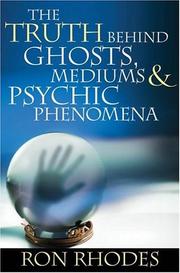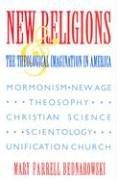| Listing 1 - 10 of 223 | << page >> |
Sort by
|
Book
ISBN: 0226828239 Year: 2024 Publisher: Chicago : University of Chicago Press,
Abstract | Keywords | Export | Availability | Bookmark
 Loading...
Loading...Choose an application
- Reference Manager
- EndNote
- RefWorks (Direct export to RefWorks)
A short, thought-provoking book about what happens to our online identities after we die. These days, so much of our lives takes place online—but what about our afterlives? Thanks to the digital trails that we leave behind, our identities can now be reconstructed after our death. In fact, AI technology is already enabling us to “interact” with the departed. Sooner than we think, the dead will outnumber the living on Facebook. In this thought-provoking book, Carl Öhman explores the increasingly urgent question of what we should do with all this data and whether our digital afterlives are really our own—and if not, who should have the right to decide what happens to our data. The stakes could hardly be higher. In the next thirty years alone, about two billion people will die. Those of us who remain will inherit the digital remains of an entire generation of humanity—the first digital citizens. Whoever ends up controlling these archives will also effectively control future access to our collective digital past, and this power will have vast political consequences. The fate of our digital remains should be of concern to everyone—past, present, and future. Rising to these challenges, Öhman explains, will require a collective reshaping of our economic and technical systems to reflect more than just the monetary value of digital remains. As we stand before a period of deep civilizational change, The Afterlife of Data will be an essential guide to understanding why and how we as a human race must gain control of our collective digital past—before it is too late.
Book
ISBN: 9892619404 9892619390 Year: 2020 Publisher: Coimbra University Press
Abstract | Keywords | Export | Availability | Bookmark
 Loading...
Loading...Choose an application
- Reference Manager
- EndNote
- RefWorks (Direct export to RefWorks)
This work brings together the production of researchers integrated in the project "Figures of Fiction", as well as other papers on the theme of this issue: "Dynamics of the Character". This theme focus on reflections on the transliterary vitality of the character and the movements of refiguration that it motivates. Therefore, the work concerns the literature, in several times and narrative genres, the cinema, the arts, the television, the publicity, the media speeches and the videogames, stressing the dynamism of the character, as a key category of the narrative
Metalepse --- Narrative genres --- Afterlife --- Character --- Figuration
Book
Year: 2015
Abstract | Keywords | Export | Availability | Bookmark
 Loading...
Loading...Choose an application
- Reference Manager
- EndNote
- RefWorks (Direct export to RefWorks)
hell [doctrinal concept] --- heaven --- afterlife --- dood --- Bosch, Jeroen
Book
Year: 2015
Abstract | Keywords | Export | Availability | Bookmark
 Loading...
Loading...Choose an application
- Reference Manager
- EndNote
- RefWorks (Direct export to RefWorks)
miniatures [paintings] --- visions [life events] --- afterlife --- Bosch, Jeroen
Book

ISBN: 9783901443381 Year: 2012 Publisher: Salzburg Residenzgalerie Salzburg
Abstract | Keywords | Export | Availability | Bookmark
 Loading...
Loading...Choose an application
- Reference Manager
- EndNote
- RefWorks (Direct export to RefWorks)
Iconography --- Thematology --- hell [doctrinal concept] --- heaven --- afterlife --- dood
Book
ISBN: 074256228X 0742565521 9780742562288 9780742565524 Year: 2008 Publisher: Lanham Rowman & Littlefield
Abstract | Keywords | Export | Availability | Bookmark
 Loading...
Loading...Choose an application
- Reference Manager
- EndNote
- RefWorks (Direct export to RefWorks)
Future life --- religion --- comparative religion --- world relgions --- the afterlife --- religion and death --- paranormality --- religion and the afterlife
Book
Year: 2022 Publisher: Heidelberg Heidelberg University Publishing (heiUP)
Abstract | Keywords | Export | Availability | Bookmark
 Loading...
Loading...Choose an application
- Reference Manager
- EndNote
- RefWorks (Direct export to RefWorks)
Die schon zu Lebzeiten durch Anhänger und Unterstützer begonnene Mythisierung Friedrichs II. und seines Enkels Konradin hat sich im Laufe der Zeit nicht nur in Deutschland, sondern auch in Süditalien mit überraschenden Folgen lebendig erhalten. So war nämlich die Erinnerung an Konradin in dem kleinen Ort Aliano in der Provinz Matera (Basilikata) selbst zu Zeiten Carlo Levis, der dort während des Faschismus im Exil lebte, fassbar – man sprach vom letzten Staufer wie von einem Nationalhelden und betrauerte noch immer seinen Tod.Abgesehen vom menschlichen Mitgefühl, das der Tod eines Jünglings in besonderem Maße weckt, gibt der unglückliche Versuch Konradins, seine Erbansprüche auf das Königreich Sizilien geltend zu machen, immer wieder Anlass zu historiografischer Debatte. Denn er ermöglicht einen Einblick in die politischen Prozesse, die zu diesem Zeitpunkt nicht nur im Gebiet des Heiligen Römischen Reiches, zu dem Mittel- und Norditalien gehörten, vonstattengingen, sondern auch in den mit dem Reich interagierenden politischen Formationen, darunter das Königreich Sizilien.Der Band ist das Resultat einer Konferenz, die anlässlich des 750. Jahrestages der Hinrichtung Konradins und seiner adligen Gefährten 2018 an der Universität Neapel Federico II gehalten wurde. La mitizzazione di Federico II e del nipote Corradino, iniziata quando erano ancora in vita ad opera dei loro sostenitori e aderenti, si è mantenuta inalterata nel corso del tempo sia in Germania sia Italia meridionale, e qui con esiti sorprendenti. Corradino era infatti ricordato nei primi decenni del Novecento nel piccolo centro di Aliano in provincia di Matera, dove Carlo Levi visse durante il Fascismo da confinato politico e dove dell’ultimo Svevo si parlava come di un eroe nazionale e si piangeva la morte.A prescindere dalla pietà umana, che scatta soprattutto quando la morte colpisce un adolescente, lo sfortunato tentativo di Corradino di far valere i suoi diritti ereditari sul Regno di Sicilia continua ad alimentare il dibattito storiografico, perché fornisce uno spiraglio di intelligibilità sui processi politici allora in corso non solo nell’area dell’Impero romano-germanico, di cui faceva parte l’Italia centro-settentrionale, ma anche in quella delle formazioni politiche che con esso si trovarono di volta in volta ad interagire, tra cui il Regno di Sicilia. Il volume è frutto del convegno tenutosi nel 2018 presso l’Università degli Studi di Napoli Federico II in occasione del 750° anniversario dell’esecuzione di Corradino e dei suoi nobili compagni.

ISBN: 0736919074 Year: 2006 Publisher: Eugene, Oregon Harvest House Publishers
Abstract | Keywords | Export | Availability | Bookmark
 Loading...
Loading...Choose an application
- Reference Manager
- EndNote
- RefWorks (Direct export to RefWorks)
the paranormal --- psychic phenomena --- ghosts --- hauntings --- psychic mediums --- doctrine --- demons --- the afterlife

ISBN: 0253209528 Year: 1989 Publisher: Bloomington, IN Indiana University Press
Abstract | Keywords | Export | Availability | Bookmark
 Loading...
Loading...Choose an application
- Reference Manager
- EndNote
- RefWorks (Direct export to RefWorks)
new religions --- theology --- God --- deity --- human nature --- death --- afterlife --- ethics --- morality --- America
Book
ISBN: 0333234960 9780333234969 Year: 1978 Publisher: London: MacMillan,
Abstract | Keywords | Export | Availability | Bookmark
 Loading...
Loading...Choose an application
- Reference Manager
- EndNote
- RefWorks (Direct export to RefWorks)
Future life --- 218 --- -Afterlife --- Eternal life --- Life, Future --- Life after death --- Eschatology --- Eternity --- Immortality --- Near-death experiences --- Eschatologie. Onsterfelijkheid. Tijdelijkheid (theodicee) --- Addresses, essays, lectures --- Religious aspects --- -Eschatologie. Onsterfelijkheid. Tijdelijkheid (theodicee) --- Afterlife
| Listing 1 - 10 of 223 | << page >> |
Sort by
|

 Search
Search Feedback
Feedback About UniCat
About UniCat  Help
Help News
News